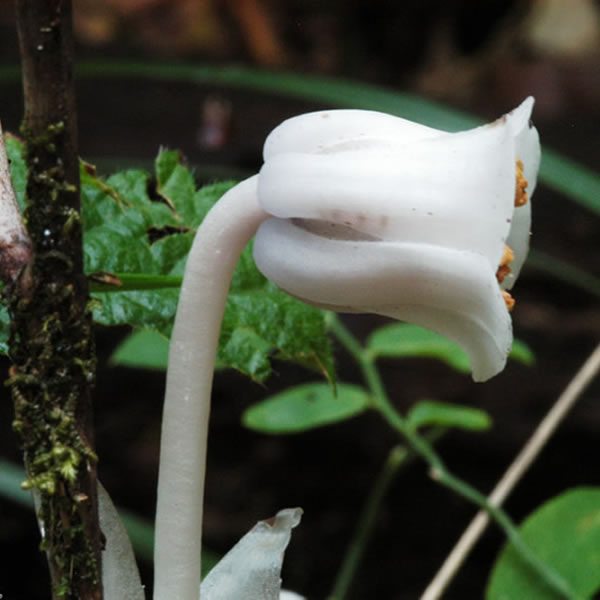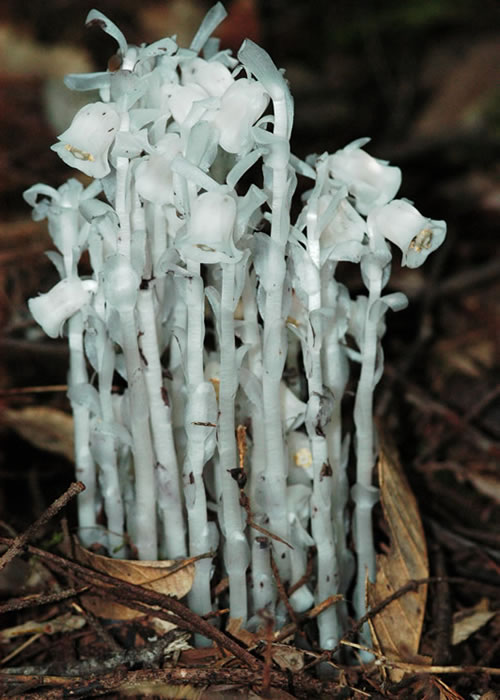Monotropa uniflora – Ghost Plant, Indian Pipe
Indian pipe is a perennial wildflower with a wide geographic distribution throughout the United States, from Maine to California and from Florida to Alaska. It is absent from the southwest, intermountain west and the central Rocky mountains. However, Indian Pipe is not a commonly encountered wildflower.
Monotropa uniflora (Monotropa – once turned; uniflora – one flowered) ranges in height from 10 to 30 centimeters. The entire plant is a translucent, “ghostly” white, sometimes pale pinkish-white and commonly has black flecks. The leaves are scale-like and flecked with black on the flower stalk (peduncle). As the Latin epithet uniflora implies, the stem bears a single flower. Upon emerging from the ground, the flower is pendant (downwardly pointed). As the anthers and stigma mature, the flower is spreading to all most perpendicular to the stem. The fruit is a capsule. As the capsule matures, the flower becomes erect (in line with the stem). Once ripened, seed is released through slits that open from the tip to the base of the capsule. The plant is persistent after seed dispersal.
America’s eminent poet, Emily Dickinson, called the Indian pipe “the preferred flower of life.” In a letter to Mabel Todd, she confides, “I still cherish the clutch with which I bore it from the ground when a wondering child, and unearthly booty, and maturity only enhances the mystery, never decreases it.”
Monotropa uniflora flowers from early summer to early autumn. It is found in mature, moist, shaded forests.






 Poems. By Emily Dickinson
Poems. By Emily Dickinson

